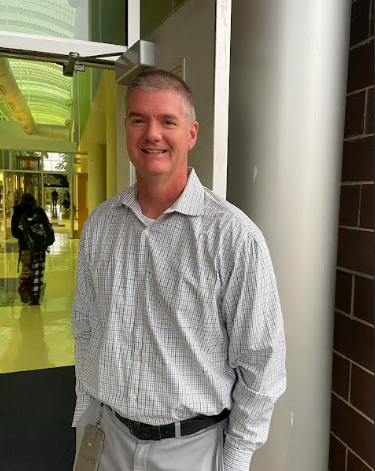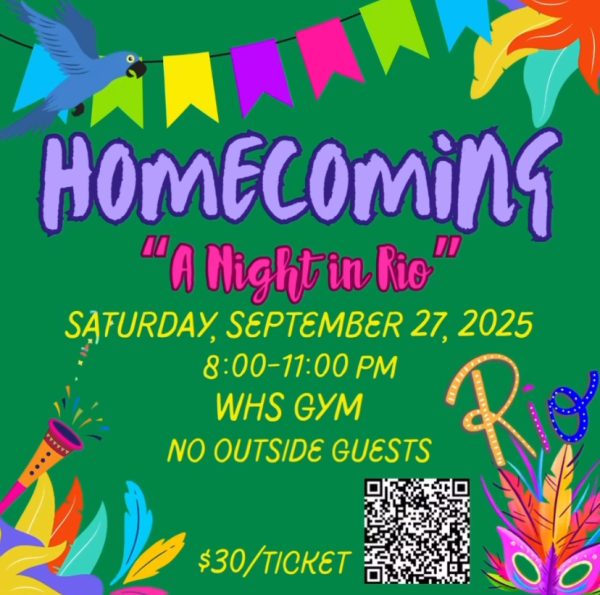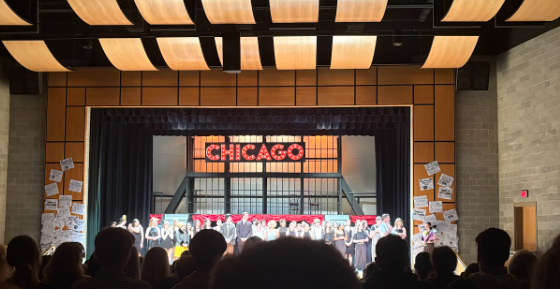Celebrating Cultures and Customs During Hispanic Heritage Month
The Weddington High School Spanish Department celebrates Hispanic History Month with decorations in Upper E Hall. Photographed by Maanya Bhutani.
October 5, 2021
Each day last week, students heard trivia questions during the end-of-day announcements about Hispanic countries or cultures. This will continue throughout Hispanic Heritage Month, which takes place from September 15th to October 15th every year. During this month, we celebrate the cultures, traditions, histories, and contributions of the Hispanic and Latinx communities.
A Brief Overview of Hispanic Heritage Month
Hispanic Heritage Month started as a week of remembrance. It began in 1968 under President Lyndon B. Johnson. It was extended to a month in 1988 by President Ronald Reagan.
It starts in the middle of the month rather than the beginning because September 15th is the independence day of Costa Rica, El Salvador, Guatemala, Honduras, and Nicaragua. During this month, most other Latin-American countries will also have their independence days, along with Columbus day taking place on October 12th.
At Weddington, Spanish classes learn about important figures in Hispanic history and much more about the month. Mrs. Rodriguez is a Spanish teacher at Weddington who teaches Spanish 1 and 2. When asked why she likes teaching kids about Hispanic culture and history, she said, “I think I like it because it allows me to share part of who I am and that it gives children a better understanding of other people.”
When asked the same question, Spanish 2 teacher Mr. Brown replied, “What I like about it is that it isn’t something you typically learn about in regular history classes and it opens people’s eyes about places other than the US. It helps people see that the world is a bigger place than they may realize.”
Shining a Light on Revolutionary Hispanic Figures
In honor of celebrating during this month, I’ve decided to highlight two people who had a crucial role in both the past and the present of Hispanic communities all over the globe.
Lin-Manuel Miranda is a Puerto Rican actor, composer, lyricist, and writer. Born January 16, 1980 in New York City, Miranda had a childhood full of music and musicals. He studied theatre at Wesleyan University, pursuing an acting career after graduating. He then wrote and developed his first show, In the Heights, which won 4 Tony Awards after making its Broadway debut in 2008. Miranda played the main character, Usnavi, for about a year.
Even though In the Heights was his first Broadway show, Miranda’s most notable and famous show is Hamilton, a hip-hop retelling of the story of Alexander Hamilton and the founding of America. After major success both on and off Broadway, the show won 11 Tony Awards. Talk about revolutionary! Miranda also played the main character of this show, starring as Alexander Hamilton in both the stage performance and recorded version.
Lin-Manuel also worked on songs for Disney’s Moana. His success and advocacy for Puerto Rico and all Hispanic and Latinx people has made him a real trailblazer and an inspiration to all.
Another historical figure is Frida Kahlo. Kahlo was a Mexican artist born on July 6, 1907 in Coyoacán, Mexico City. Frida had a relatively normal childhood, with a father who encouraged her to pursue things that weren’t typical “girly” things at the time, like playing soccer. When she was older, she went to National Preparatory School, where she became more politically active.
On September 17, 1925, Frida and a friend were traveling on a bus when it crashed into a streetcar. Kahlo was impaled by a handrail at her hip. She suffered serious injuries and had to stay in the hospital for several weeks. During recovery, she began painting, finishing her first self-portrait a year later. This is where it all began.
Frida Kahlo was known for her vibrant use of colors, her famous self-portraits, and her iconic unibrow. Her paintings are known across the world, including ‘The Two Fridas’ and ‘The Wounded Deer’. They are still sought after to this day.
Even today, over 65 years from her death in 1954, Kahlo still influences Hispanic culture. She included much of Mexico’s history in her work, building a foundation of cultural customs and values that are still important now.
The Importance of Hispanic Heritage Month
It’s important that everyone everywhere feels recognized and celebrated for who they are, and Hispanic Heritage Month is a great way to learn more about people who live and do things differently from yourself. Take some time to look up something cool about someone else’s culture! You never know what amazing things you could discover.











Mr. Newman • Oct 6, 2021 at 7:41 pm
Excellent article. Good stuff good stuff. I didn’t know so many Latin American countries had their independence days so close to each other on a calendar. Very epic.